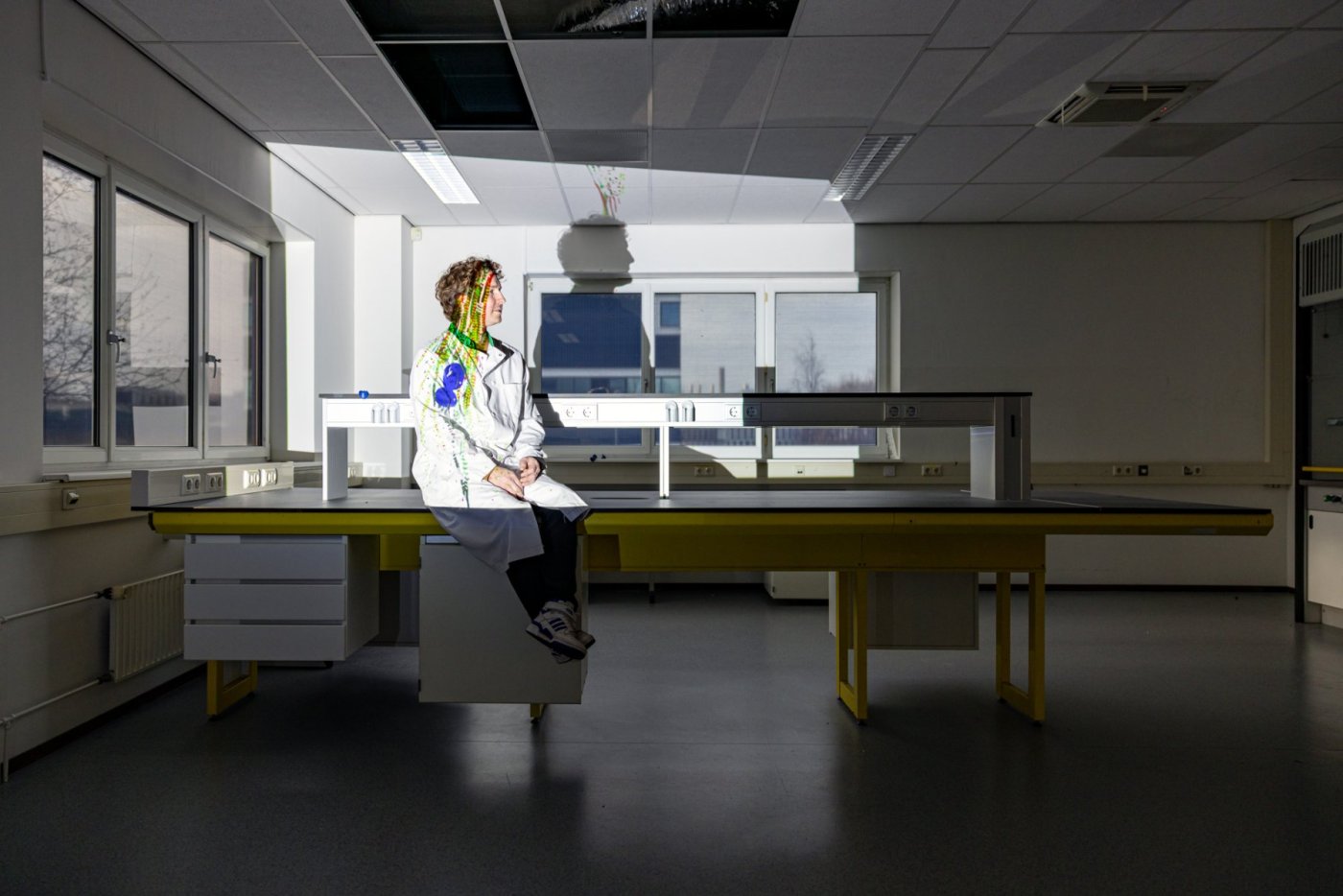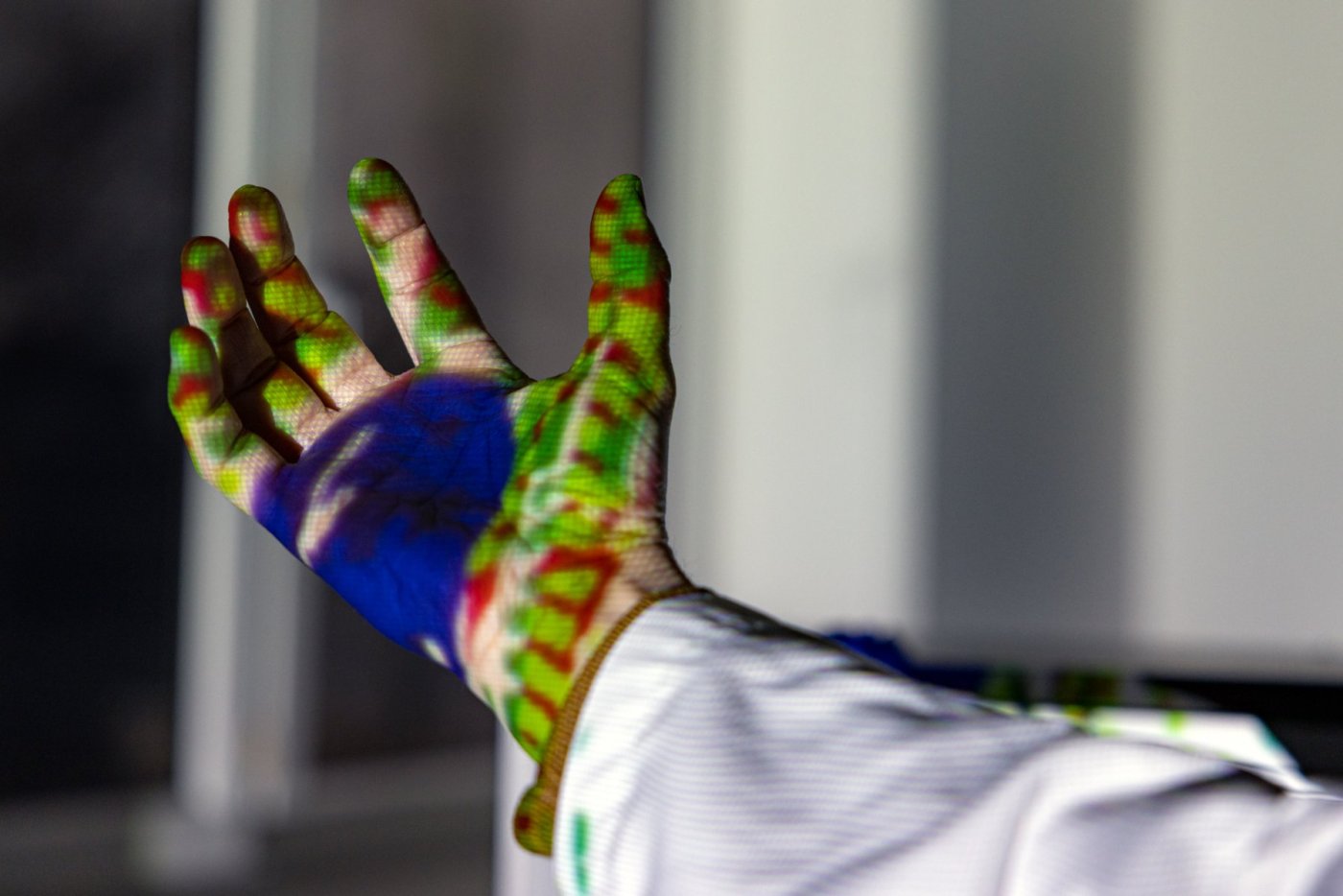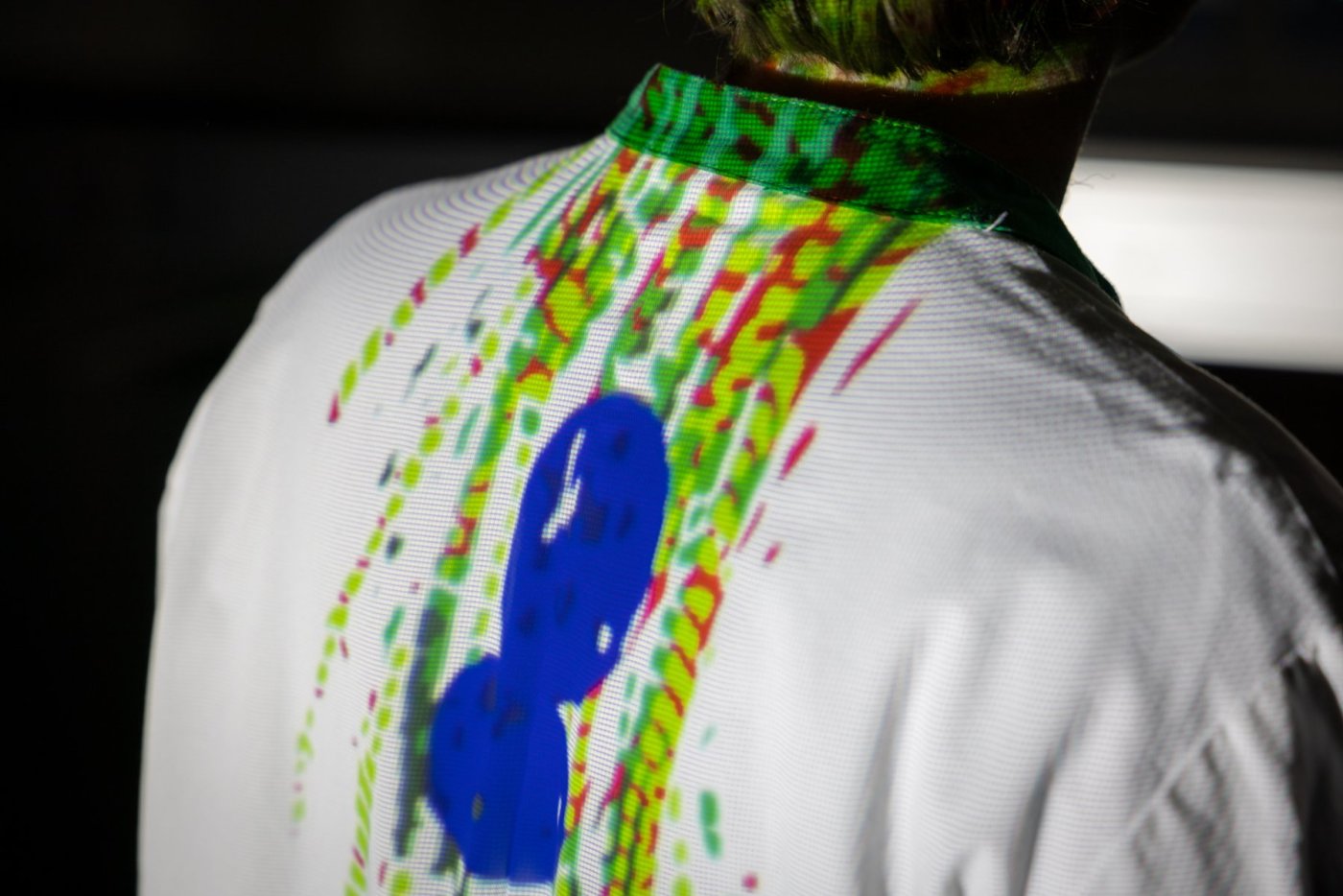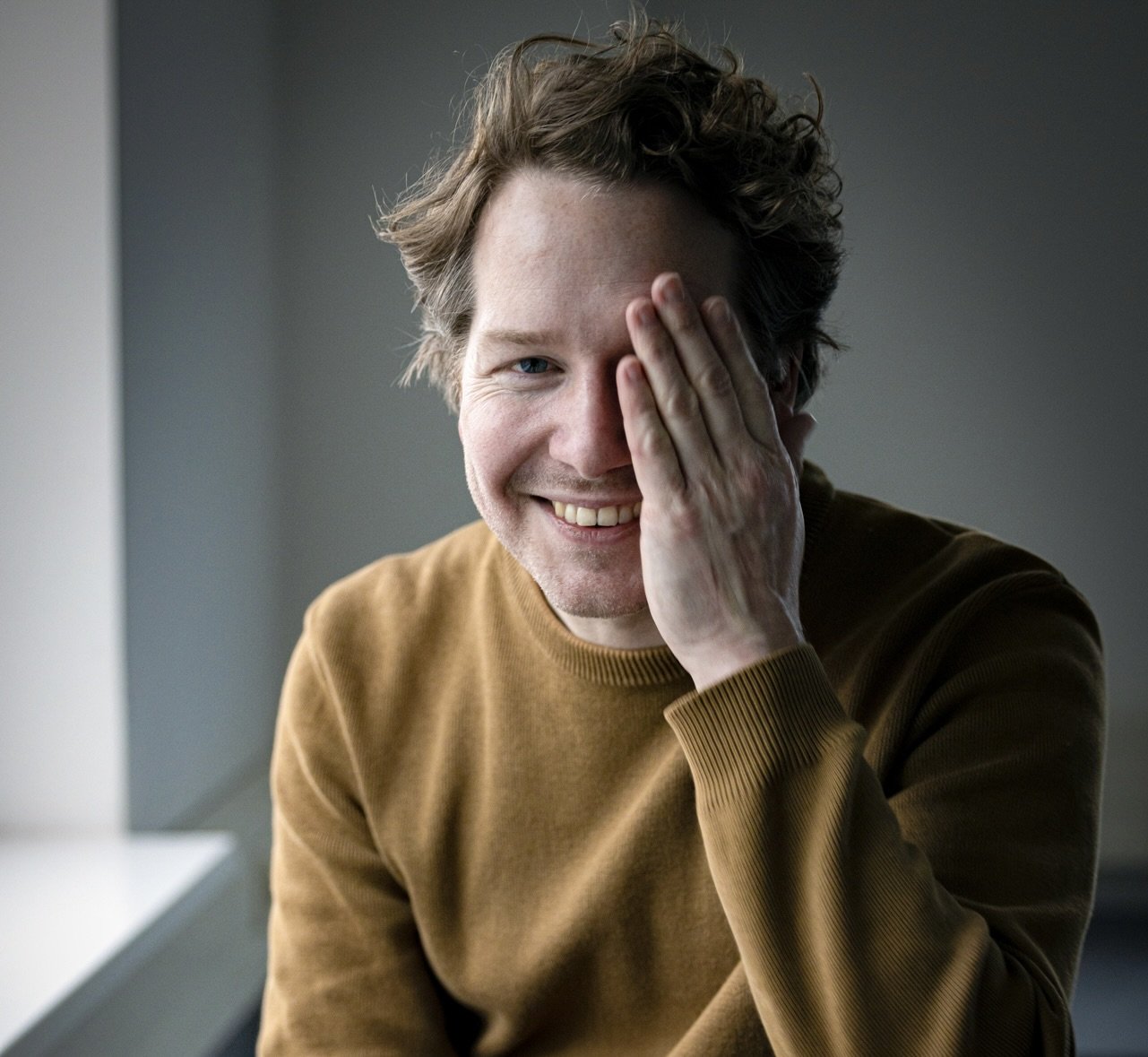Berend van Meer wanted to become a doctor but did not find the clinical side – ‘all those symptoms and patients’ – attractive. So instead, he studied electrical engineering because he did enjoy taking computers apart. During his studies, he attended a lecture given by Ronald Dekker, a researcher at Philips Research and a part-time professor at TU Delft. It was about “living chips”, and that was a revelation for Van Meer. Since then, his career has been about combining technology and biology and organ-on-chip technology, which he has done as a PhD student, (postdoc) researcher, business developer for knowledge valorisation, co-designer of national infrastructure and – recently – as an entrepreneur.
Don’t spend ages pondering, fail quickly instead
After his graduation, Van Meer started his career at Leiden University as the only engineer between the biologists in the lab of Christine Mummery, who saw something in that cross-fertilisation. ‘I was only busy with measurements’, he remembers laughing – and that was the subject he liked least at TU Delft. But, he did learn a lot about experiments and provided more solid analyses. It gave him the chance to enter the organ-on-chip field via the Institute for human organ and Disease Model Technologies (hDMT). He was subsequently asked to help establish an organ-on-chip centre at the University of Twente and to valorise the centre’s knowledge and technology. Besides that, he also took the lead in setting up a biomedical production technology within NXTGEN HIGHTECH, with support from the National Growth Fund.
‘The growth fund is fantastic’, states Van Meer. People from other countries are really jealous of this. Even colleagues from Switzerland – which is definitely not a bad environment for high-tech and biomedical innovation – tell him: ‘We would never receive this from our government’. With this fund, the Dutch government dares to invest in technologies that could possibly change the future but for which success is uncertain. It is comparable to high-tech start-ups: the majority of these do not become profitable companies. The fact that the government dares to invest in such genuine innovation in this manner is unique and an incredible opportunity. Though it remains a pity that the elaboration of some aspects of the proposal is both complex and time-consuming.
Career:
Berend van Meer studied electrical engineering at TU Delft and in 2020, gained his doctorate cum laude from Leiden University Medical Center for the measurement and quantification of the effect of drugs and diseases on heart muscle cells cultured from human heart muscle cells. He is driven by the combination of technology and biology, specifically for developing and applying organ-on-chip systems. In 2019, Van Meer was the co-founder of the Organ-on-Chip Center Twente and, until February 2022, its business lead and the person responsible for knowledge valorisation. From 2021 to 2022, he was a board member of the Institute for human organ and Disease Model Technologies (hDMT).

‘Trying something and quickly failing is not that expensive. A lot of discussion about a hefty project proposal is far more expensive.’
Of course, we’re talking about public money here. And you need to spend that carefully and limit risks. But imagine that it was your own money… would you then spend it in that way? An entrepreneur or venture capitalist looks at that from a very different perspective. You invest money in a great idea from a good team and get down to work with them: try things, quickly fail and adjust the course. That’s a far better way of limiting risk than by trying to exclude risks in advance by means of a lot of overheads, long procedures, a bulky work plan and a whole circus of evaluations with key performance indicators that often don’t mean a lot. Trying to limit all risks is, ironically, a risk in itself.
‘Just from reading the abstract, you can get a pretty good idea about whether a proposal has potential or not’, says Van Meer. Then you can make better use of the time and energy of everyone involved to closely monitor the realisation of the project and adjust its course quickly and in a timely fashion. ‘Trying something and quickly failing is not that expensive. A lot of discussion about a hefty project proposal is far more expensive’. But, of course, things are not so easy in practice: the question is who will or may take that risk with public funding.
In 2010, Van Meer was one of the founders of the Lisa Waller Hayes Foundation that contributes to the fight against pancreatic cancer (now under the name Living With Hope) and in 2014, he co-founded Technological Innovation in Medicine (TIM Solutions), a collaboration between young doctors and engineers which, amongst other things, led to the spin-out OSAsense. He received the Hugo van Poelgeest Prize for research into alternatives for animal experiments and an EIT Health PhD Transition Fellowship to develop the results of his PhD research into an application. Since February 2022, Van Meer has been the co-founder and Chief Technology Officer of Demcon biovitronix, which wants to engineer applications for organ-on-chip and micro-physiological systems and market these.

'A company, on the other hand, needs to do one thing really well to be able to use it for the manufacture of a competitive product or to offer a competitive service.'
Valorisation is building on previous projects
A researcher is interested in whether and how something works, and a company is interested to know if it works. ‘The sum of these two viewpoints is technology transfer’, states Van Meer. However, researchers and companies have very different approaches. A researcher is not interested in doing an experiment eight times. Instead, they are mainly interested in writing an attractive article that contains as much new knowledge as possible. A company, on the other hand, needs to do one thing really well to be able to use it for the manufacture of a competitive product or to offer a competitive service. For industry, it is therefore essential to be able to build further upon previous results, whereas science is more interested in continually seeking out new perspectives. Consequently, there is a risk that previous results are not further developed and the (practical) knowledge disappears with the departure of a researcher or on completion of the project. Unfortunately, the current funding system is not able to prevent this. New grants do not usually dovetail well with previous grants, and each student has to start again from scratch.
These two worlds could be better aligned with each other if research grants focused less on valorisation and more on knowledge building. That might sound paradoxical, but it is not scientifically relevant whether there is a market for something. The real question is: can somebody repeat your experiment tomorrow and take your findings further so we can build upon each other’s knowledge? Besides the traditional citations of publications, we should also look at how often a piece of knowledge is “used”: as a puzzle piece or building block in a subsequent study, the next project or for a future application.
Whereas universities like to collaborate and publish their findings, companies are often less open, as a result of which they cannot build further upon each other’s technology. According to Van Meer, the semiconductor industry provides a good example of how things could be done differently. There innovation is driven by open technology and standardisation. ‘That is what we also need in the biomedical world’.
Not an exit strategy but a company with impact
His own organ-on-chip field provides a good illustration of this. Organs-on-chips can be used to model diseases and test how human tissue responds to drugs, foodstuffs or cosmetics. Technical possibilities abound, and now the main challenge is the adoption of the technology. As a company, you’d ideally like to develop new applications with a client, but the client pays for a working product and not for an uncertain outcome or for prototype chips to perform tests with. And each application is different, although you often use the same or similar components. Developing a new application requires a lot of testing and the use of many components until you get the right combination. That requires an awful lot of money and then, says Van Meer: ‘Your end result is not like a TV that you can mass produce, but a tailored approach for a single application in three months of research’. Van Meer recently became the co-founder and Chief Technology Officer of Demcon biovitronix. This company wants to render the adoption of organ-on-chip technology easier and, in the future, make that tailored approach affordable and scalable.
The mechatronics design and engineering consultancy Demcon had known about Van Meer’s work for some time. ‘For many of the high-tech challenges that we came up against in NXTGEN, especially those concerning system integration, Demcon was consistently put forward as the partner to solve it.’ Now, Demcon is offering Van Meer the chance to cut his teeth on business. For Van Meer, it is important that he can now collaborate with an entrepreneurial company that works closely with universities, is busy with technology transfer and reinvests its own money. Money does need to be earned, but the company thinks and works on the basis of the content and with the ambition of building a sustainable, independent company. That is not always the case with some investment companies who seem to find the content less important than the exit.
‘The risk’, explains Van Meer, ‘is that in order to realise a good exit, a venture capitalist often forces a technology start-up towards drug development, where the possible returns are higher. The models developed are then, for example, used in-house for drug development and are consequently not made more widely available as a product or platform on which other parties can build further. That inhibits the overall innovation in the field’.

'The client pays for a working product and not for an uncertain outcome.'
An approach that does not appeal to Van Meer, which is one reason why he is so happy with Demcon.
‘I had a chat with Dennis Schipper, the co-founder and owner of Demcon’, he says. Schipper asked Van Meer: ‘What is the exit? When can we sell?’ You can always do that, replied Van Meer, but that is not a goal in itself and not part of the strategy. Schipper nodded approvingly. They have the same ambition: to build a company and not just to start a venture for a quick sale. So, now he feels the pressure to make ‘three slides that prove to a client that my research is worthwhile’. If a venture capitalist had supported him, then he would probably be making slides for their next funding round instead. ‘I’m sure I can make those’, he says. ‘I know which information they need to contain. I do not know that for my client yet – I still need to prove that’. And that difference says a lot. The venture capitalist gives you an investment and trust, the client helps you to realise turnover and – hopefully – impact.
Three questions for further reflection and discussion:
- Could we use public funds more effectively and efficiently if we were to deploy these funds as if we were investing our own money?
- Besides the citation score, should researchers also be assessed (and recognised) on a score for “use” or “building further on previous projects”?
- Can we, and should we, encourage innovators to prefer building a sustainable company above an exit strategy as adopted by venture capitalists?
